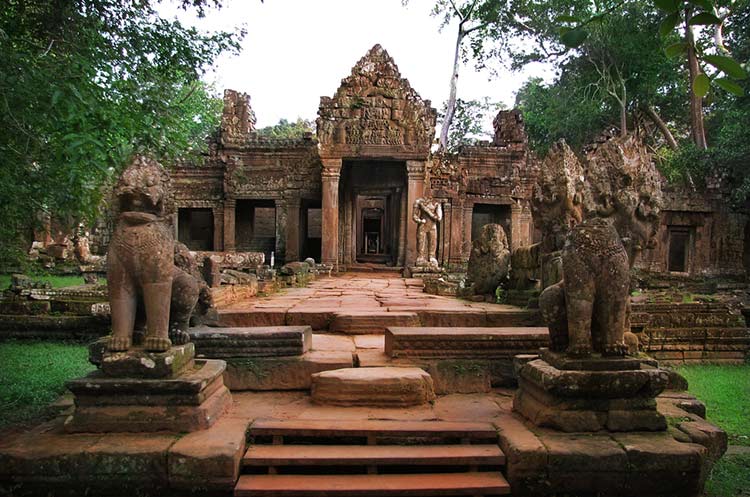Koh Ker is a remote archaeological site in northern Cambodia that served as the capital of the Khmer Empire for a brief period during the early 10th century. The temple complex is located in the dense forests of the Preah Vihear province, approximately 120 kilometers northeast of Angkor Wat. Koh Ker was established as the capital by King Jayavarman IV, who ruled from 928 to 944 AD. During his reign, Jayavarman IV initiated a series of ambitious building projects, including the construction of numerous temples and shrines at Koh Ker. The most notable of these structures is the Prasat Thom, a towering seven-tiered pyramid temple that stands at the center of the site.
The architecture of Koh Ker is distinct from that of other Khmer temples, with a more angular and geometric style that reflects the artistic experimentation of the period. The temple complex covers an area of approximately 81 square kilometers and includes more than 180 structures, many of which are still buried beneath the jungle vegetation. After Jayavarman IV’s death, Koh Ker was briefly abandoned before being reclaimed by later Khmer rulers. The site continued to be used as a religious and ceremonial center until the 13th century when it was largely abandoned and fell into disrepair.
In the late 19th century, French archaeologists began to uncover and restore the temples of Koh Ker, bringing international attention to the site. Today, Koh Ker is a UNESCO World Heritage site and a popular destination for tourists seeking to explore Cambodia’s rich history and cultural heritage. Visitors to Koh Ker can marvel at the impressive architecture of the temples, wander through the overgrown ruins, and imagine what life was like during the heyday of the Khmer Empire. The site offers a unique opportunity to step back in time and experience the grandeur and mystery of Cambodia’s ancient past.


